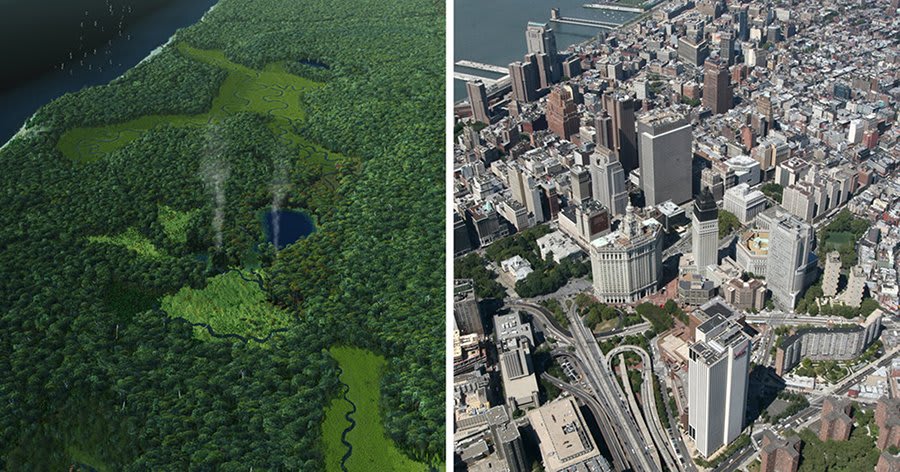
From The New York Times: “Another visitor to New York grumbling about the racket.
‘They frequently make such a noise that it is difficult for a person to make himself heard,’ wrote Peter Kalm, a Swedish-Finnish naturalist. That was Manhattan in 1748.
He was writing about the chorus of frogs croaking at nightfall.
So vibrant was natural life in New York before European settlement, the city could have become ‘the crowning glory of American national parks,’ Eric W. Sanderson of the Wildlife Conservation Society wrote in “Mannahatta: A Natural History of New York City.”
Even today, by squinting, Dr. Sanderson said in an interview, our modern eyes can glimpse remnants of the landscape of 1609, when Henry Hudson sailed into the harbor, at places like Jamaica Bay, Inwood Hill Park and Pelham Bay Park.
‘What you can’t ever find is the sound of what it was like,’ Dr. Sanderson said.
Until, perhaps, now…
Drawing on an archive of wildlife audio in Cornell University’s Macaulay Library of Natural Sounds, ‘Calling Thunder’ adds layers of immersive sound to images at four points in Manhattan: Collect Pond Park, near the courts in Lower Manhattan; the High Line, the park built on the stilts of a New York Central Railroad spur along the West Side; the American Museum of Natural History on the Upper West Side; and Inwood Hill Park, at the northern tip of Manhattan.
The Unsung website offers various ways to take in the weave of history, research and informed speculation in ‘Calling Thunder,’ each with its own rewards: as a simple audio recording, 360-degree video, or, coming soon, virtual reality. It is a collaboration of Bill McQuay, a former sound engineer with NPR who is now an audio producer with the Cornell Lab of Ornithology, and David Al-Ibrahim, an interactive storyteller and graduate student at the School of Visual Arts…” (For the full story and to hear the sounds, click here)

